Basic Dimensions
A basic dimension is considered a theoretically exact dimension. All a basic dimension does is tell you where the geometric tolerance zone or datum target is located. Look for a geometric tolerance in a feature control frame related to the features being dimensioned.
Basic dimensions are used to establish the "true profile" which a profile tolerance will then control. So if a profile tolerance is applied to a hole, the diameter MUST be a basic dimension.
Dimensioning Methods
There are two methods of dimensioning described in ASME Y14.5: rectangular coordinate dimensioning and geometric tolerancing.
Rectangular coordinated dimensioning is a simplistic method of dimensioning used to locate features. Liner dimensions specify distance in coordinate directions from two or three mutually perpendicular planes. Rectangular coordinate dimensioning must clearly indicate which features of the part establish these planes.
Geometric tolerancing is a comprehensive set of symbols used as a precise method to communicate engineering drawing requirements. Geometric tolerances are a category of tolerances used to control size, form, profile, orientation, location, and runout. They are the preferred method for locating features of features of size on a part.
The purpose of this unit is to give an introduction to the topic of geometric dimensioning and tolerancing. With the increase of interchangeable manufacturing where companies are producing parts all over the world, it is necessary to produce drawings where nothing is left to interpretation. Geometric dimensioning and tolerancing, when applied appropriately, leaves little room for interpretation. It allows for consistency between design, manufacturing, and inspection. The standard that specifies correct practices for dimensioning and tolerancing is ASME Y14.5M. This unit will cover terminology used in geometric dimensioning and tolerancing, method for reading feature control frames, datum reference frame theory, and explanations of each geometric characteristic.
Explain the following:
Geometric Dimensioning and Tolerancing is a three-dimensional, mathematical system. Within this system, features on an object are oriented or located relative to a Cartesian Coordinate System or Datum Reference Frame. This is done using Feature Control Frames, which specify acceptable tolerance zones for the features relative to the Datum Reference Frame.
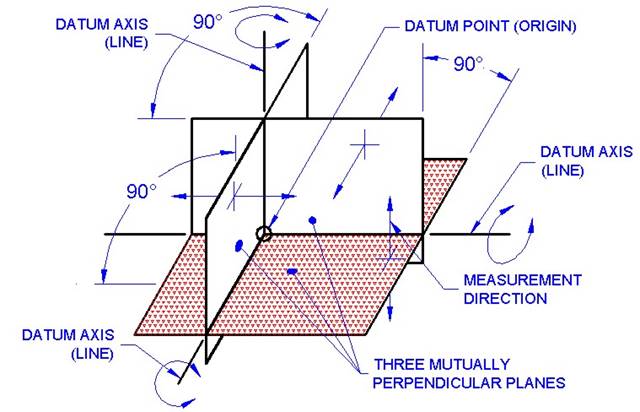
Figure 1. Datum Reference Frame.
2. Datum - A theoretically exact point, axis, or plane derived from the true geometric counterpart of a specified datum feature. A datum is the origin from which the location or geometric characteristics of features of a part are established.
3. Datum feature - An actual feature of a part that is used to establish a datum.
4. Datum Feature Symbol - The datum feature symbol is the symbolic means of indicating a datum feature and consists of a capital letter enclosed in a square frame and a leader line extending from the frame to the concerned feature, terminating with a triangle.
a. Applying a feature control frame to a feature without size such as a surface.
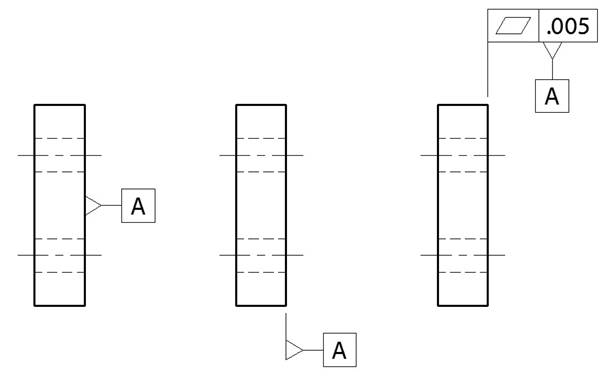
Figure 2. Applying a Feature Control Frame to a Feature Without Size.
b. Applying a feature control frame to a feature of size such as a hole, cylinder or slot. Datum B is the axis of the .498-.500 hole, datum C is the median plane of the .375-.380 slot, and datum D is the axis of the .997-1.000 cylinder.
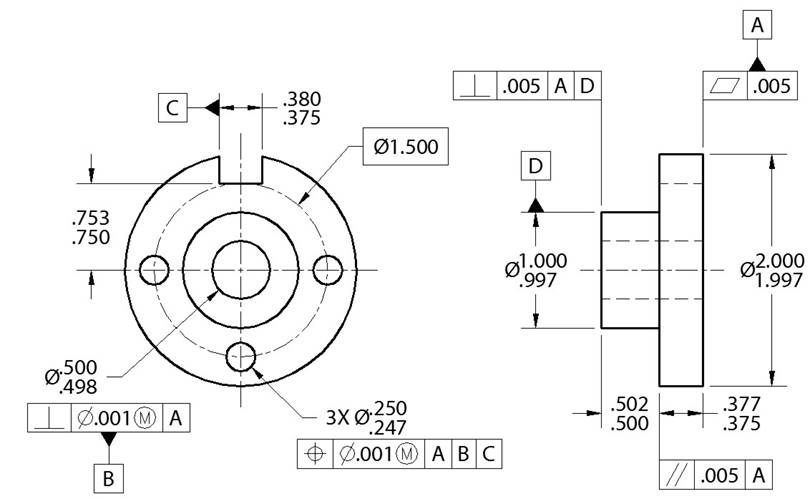
Figure 3. Applying a Feature Control Frame to a Feature With Size.
5. Datum feature simulator - A surface of adequately precise form contacting the datum feature(s) and used to establish the simulated datum(s). Typically this surface must be at least 10 times better in quality (flatness) than the tolerances specified on the drawing.
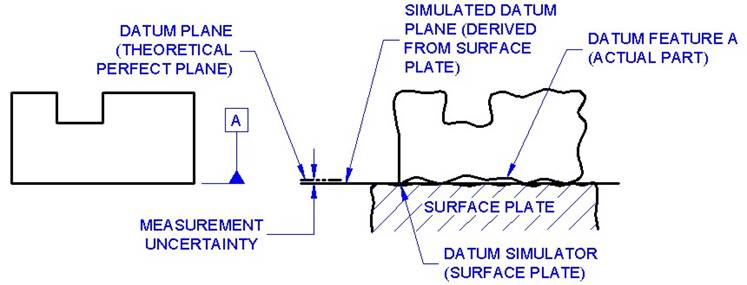
Figure 4. Datum Terminology.
4. Feature - The general term applied to a physical portion of a part, such as a surface, pin, tab, hole, or slot.
Identify and describe the following:
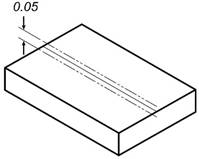
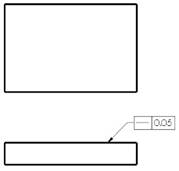
Figure 5. Straightness.
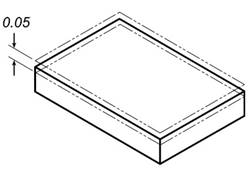
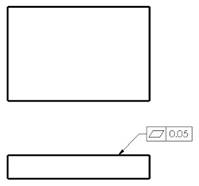
Figure 6. Flatness.
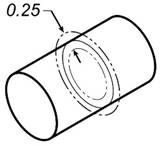
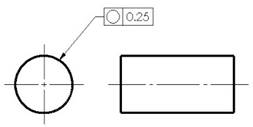
Figure 7. Circularity.
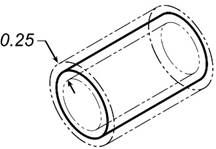
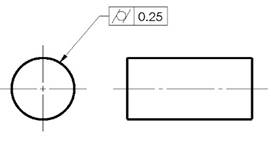
Figure 8. Cylindricity.
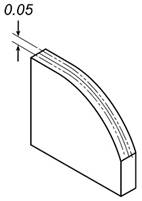
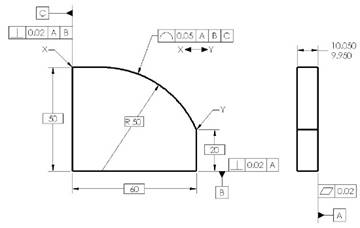
Figure 9. Profile of a Line.
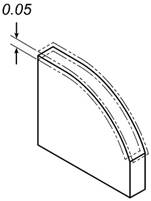
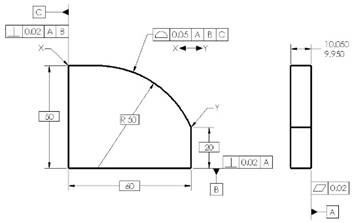
Figure 10. Profile of a Surface.
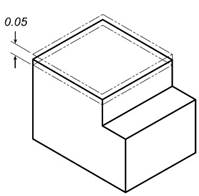
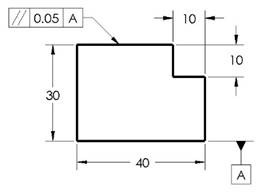
Figure 11. Parallelism.
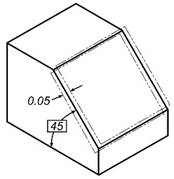
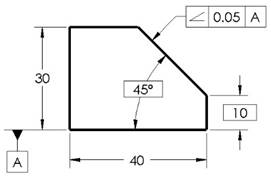
Figure 12. Angularity.
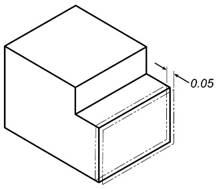
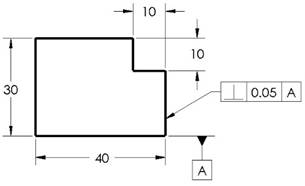
Figure 13. Perpendicularity.
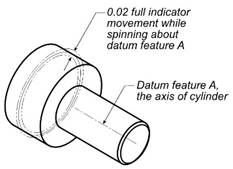
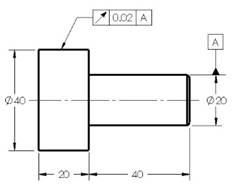
Figure 14. Circular Runout.
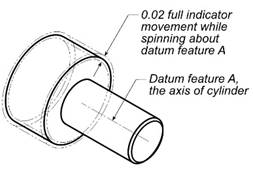

Figure 15. Total Runout.
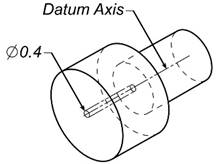
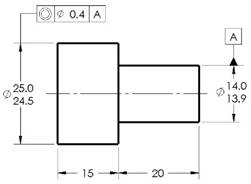
Figure 16. Concentricity.
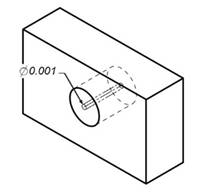
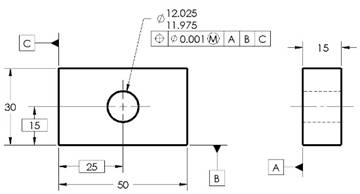
Figure 17. Position.
Define the following terms:
Identify and describe the make-up of a feature control frame. R1(340-341), R2(252).
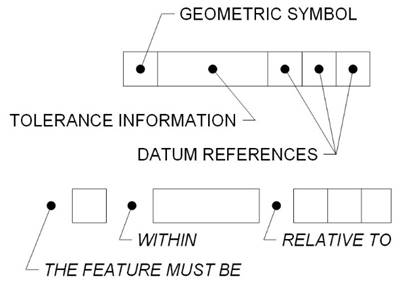
Figure 18. Reading a Feature Control Frame.


Identify the symbols representing the following (see Table 1 for correct geometric characteristic symbols): R1(340), R2(252).
Table 1. Geometric Characteristic Symbols.
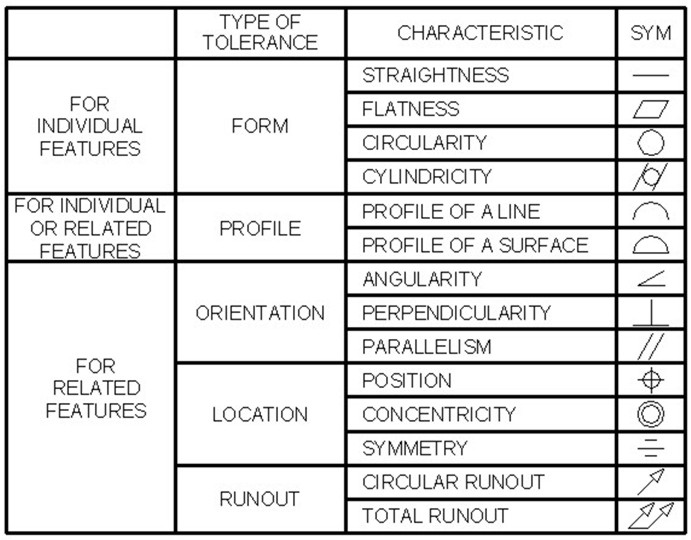

Figure 19. Common Symbols used with Geometric Dimensioning.
Source: https://www.cabarrus.k12.nc.us/cms/lib/NC01910456/Centricity/Domain/4444/Basic%20Geometric%20Dimensioning%20and%20Tolerancing.docx
Web site to visit: https://www.cabarrus.k12.nc.us/
Author of the text: indicated on the source document of the above text
If you are the author of the text above and you not agree to share your knowledge for teaching, research, scholarship (for fair use as indicated in the United States copyrigh low) please send us an e-mail and we will remove your text quickly. Fair use is a limitation and exception to the exclusive right granted by copyright law to the author of a creative work. In United States copyright law, fair use is a doctrine that permits limited use of copyrighted material without acquiring permission from the rights holders. Examples of fair use include commentary, search engines, criticism, news reporting, research, teaching, library archiving and scholarship. It provides for the legal, unlicensed citation or incorporation of copyrighted material in another author's work under a four-factor balancing test. (source: http://en.wikipedia.org/wiki/Fair_use)
The information of medicine and health contained in the site are of a general nature and purpose which is purely informative and for this reason may not replace in any case, the council of a doctor or a qualified entity legally to the profession.
The texts are the property of their respective authors and we thank them for giving us the opportunity to share for free to students, teachers and users of the Web their texts will used only for illustrative educational and scientific purposes only.
All the information in our site are given for nonprofit educational purposes